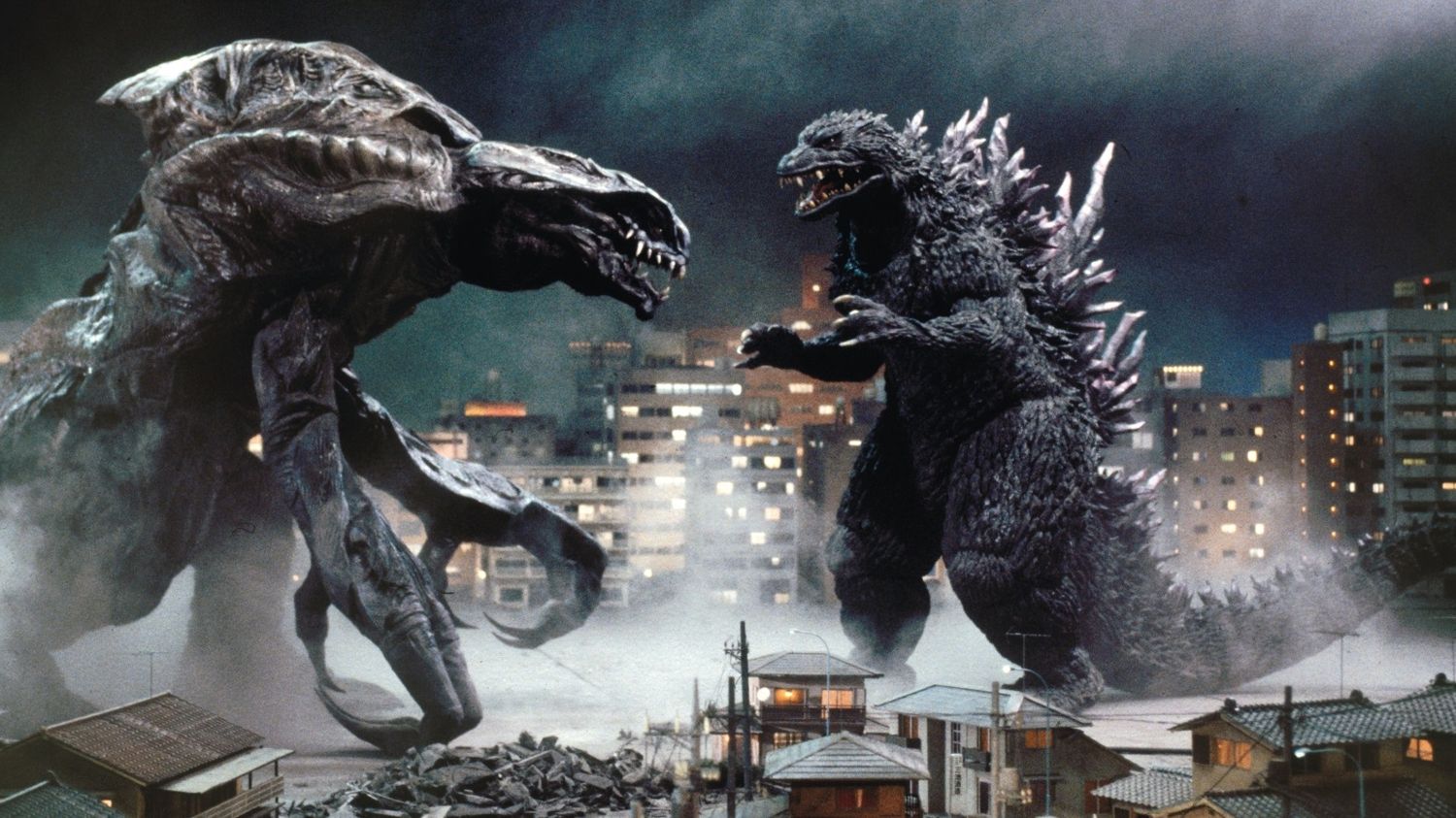“Godzilla”, one of the oldest cinema franchises since 1954, shines brightly in a splendid, richly illustrated work.
Godzilla: the great story of the king of the monstersby Graham Skipper published by Hugin & Muninn, constitutes the family album of the antediluvian monster resurrected by the atomic tests in the Pacific, from the eponymous film by Ishiro Honda from 1954. With 38 films, the filmography of Godzilla is so prolific, complex and diverse that it is divided into several “eras”: Shōwa (1954-1975), Heisei (1984-1995), Millennium (1999-2004) and Reiwa (2016-2019). After Japan, where he was born, Godzilla was expatriated via co-productions (Warner-Toho) to Hollywood from 1998, and two films are expected in the coming months.
The Monster of Lost Times
In 1950, The Thing from Another World (The Thing) by Christian Niby and Howard Hawks, launched a golden age of science fiction in Hollywood. Japan responded in 1954 with Godzilla from director Ishiro Honda. Its immense worldwide success will spawn a host of giant monsters in Japanese cinema. It’s the Kaiju Eiga (monster films), a genre in its own right, now iconic in pop culture. After two feature films in black and white (Godzilla, The Return of Godzilla), the transition to color is flamboyant, and shows, among other things, the great colorist that is director Ishiro Honda, previously artistic director of Akira Kurosawa.
Preceded by King Kong in 1933, it was The Monster of Lost Times (1953), by Eugène Lourié after Ray Bradbury, who will directly inspire Godzilla in 1954. But the aesthetic is radically different. Godzilla and Kaijù have a recognizable style. A pretext for apocalyptic visions of megacities destroyed, trampled, razed by gigantic monsters, the films are based on the visualization of meticulous models of cities ransacked by actors dressed in latex costumes. Ridiculous ? Some shots in these marvelous films are reminiscent of Goya’s Giants.
Atomic fear
What at first glance may seem archaic is at the origin of an original, beautiful and assertive aesthetic, of which Ishiro Honda is the king and his special effects designer Eiji Tsuburaya, the inspired genius. Graham Skipper is the first to bring together so many photos from the Godzilla filmography, ricocheting across series, comics, toys, and others goodies. He had access to the archives of Toho, producer of the franchise, to extract the most beautiful gems, often unpublished. The photos of films, sets, posters, with demanding inking, constitute a sum, in a beautiful book with an embossed cover: beautiful work.
Iconographic, this thematic monograph is more descriptive than analytical. Graham Skipper acts as a film historian, with detailed synopsis, technical information and contextualization of the films. It recreates a still living story, born in the 1950s, as a metaphor for atomic fear, then at its height. Primarily intended for adults, Godzilla has become infantilized, increasingly aimed at young audiences. Reawakened by Hollywood in 1998 in the form of blockbusters, a new opus is expected in December and another in 2024. Coming from the depths of the ages, Godzilla is eternal.

Godzilla: the great story of the king of the monsters
Graham Skipper
Editions Huggin & Muninn
Hardcover
€39.95
